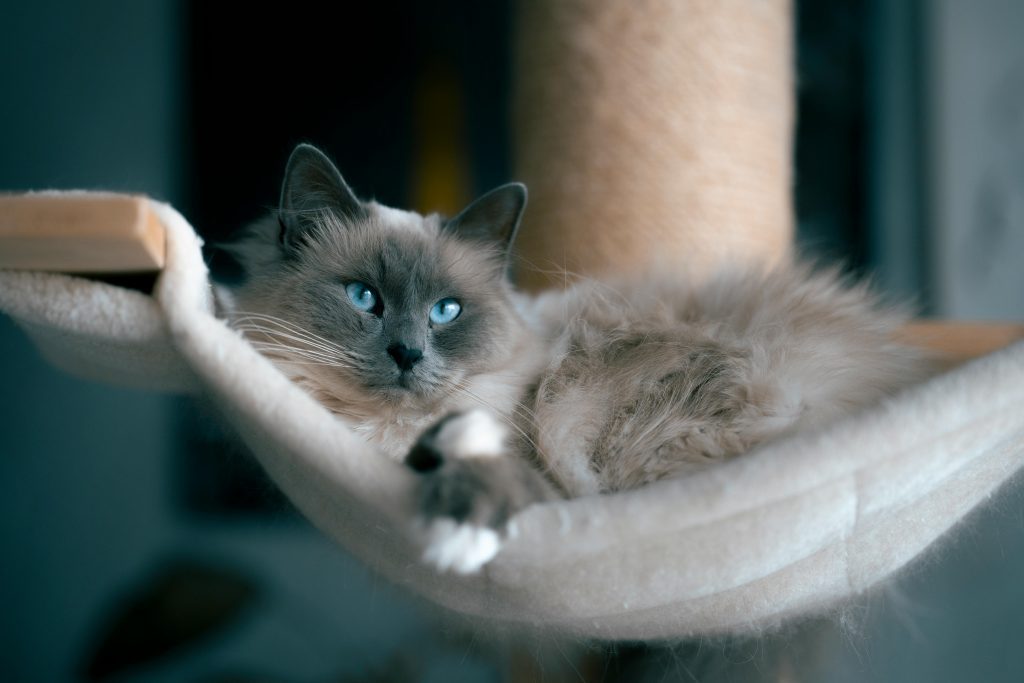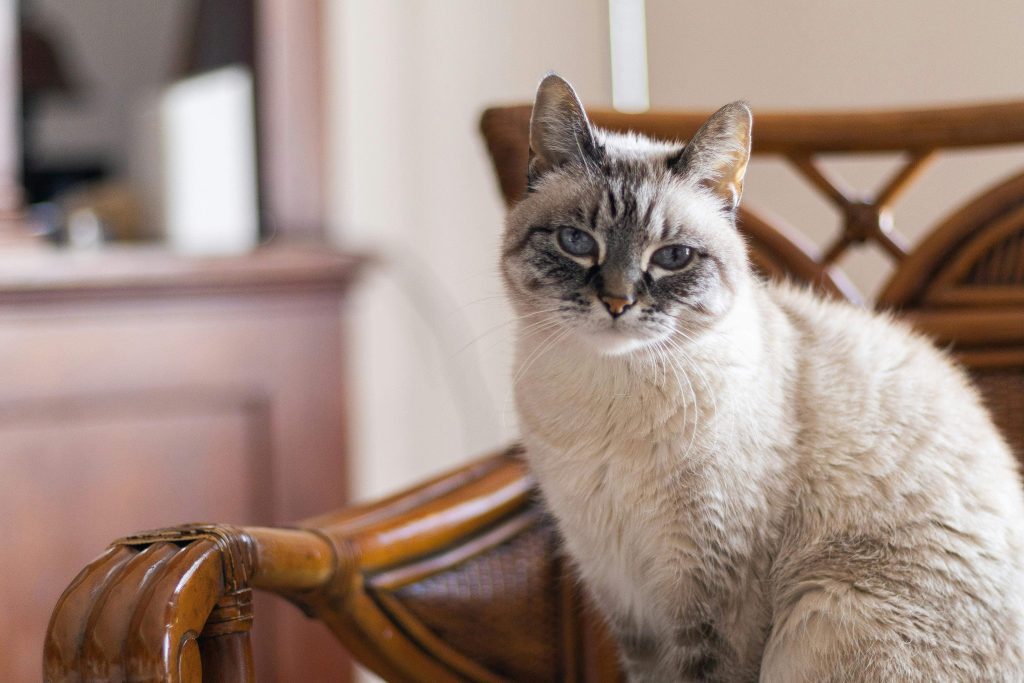Looking for a calm, beautiful, and emotionally intelligent feline companion? Meet the Himalayan Ragdoll Mix—a rising star in the hybrid cat world for 2025. This crossbreed blends the gentle, floppy charm of the Ragdoll with the elegant poise and plush coat of the Himalayan, creating a cat that’s both visually captivating and easygoing.
Known for their striking blue eyes, affectionate personality, and relaxed temperament, they’re a favorite among apartment dwellers, seniors, and anyone seeking quiet companionship.
With growing buzz on social media, their appeal goes beyond looks—owners often describe them as “nearby, not needy.” Below, we’ll explore their size, coat types, personality, home needs, health considerations, and adoption vs. breeder tips, plus a quick comparison with purebreds.
Origins of the Himalayan–Ragdoll Mix
This mixed breed blends two iconic feline bloodlines—the serene Ragdoll, developed in 1960s California for its floppy, affectionate nature, and the regal Himalayan, created in the 1930s from Persian–Siamese crosses to achieve color-point beauty with a plush coat.
While the mix isn’t recognized as a distinct breed by CFA or TICA, responsible breeders may register the parent cats and provide full health records. The pairing aims to combine a calm temperament with mesmerizing blue eyes and luxurious fur—traits that echo the Himalayan’s early history, when they were sometimes called “Colorpoint Persians.”
“I have a Himi/Ragdoll mix too, and you can see the Ragdoll side, but also his Himi features. This mix is a wonderful combo!” — Owner comment in a public Facebook group; anecdotal experience
Search interest in designer hybrids rose notably in 2024 (based on Google Trends for related terms), and this emerging crossbreed is captivating cat lovers who want both elegance and easygoing companionship.
Physical Characteristics
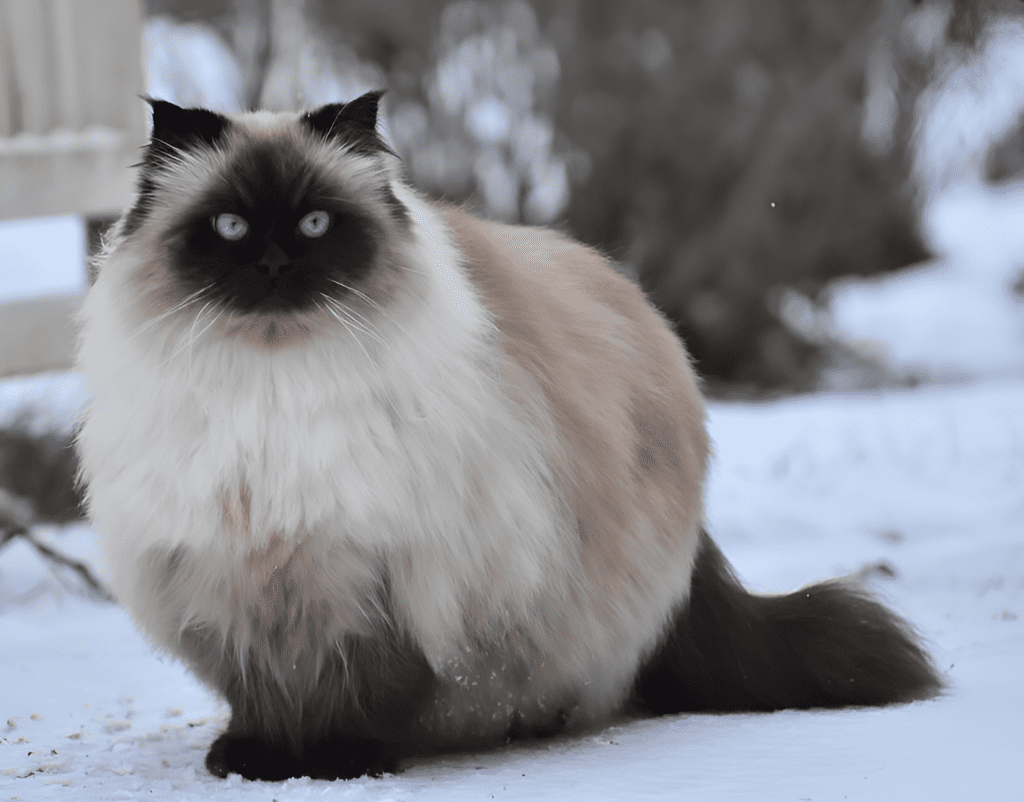
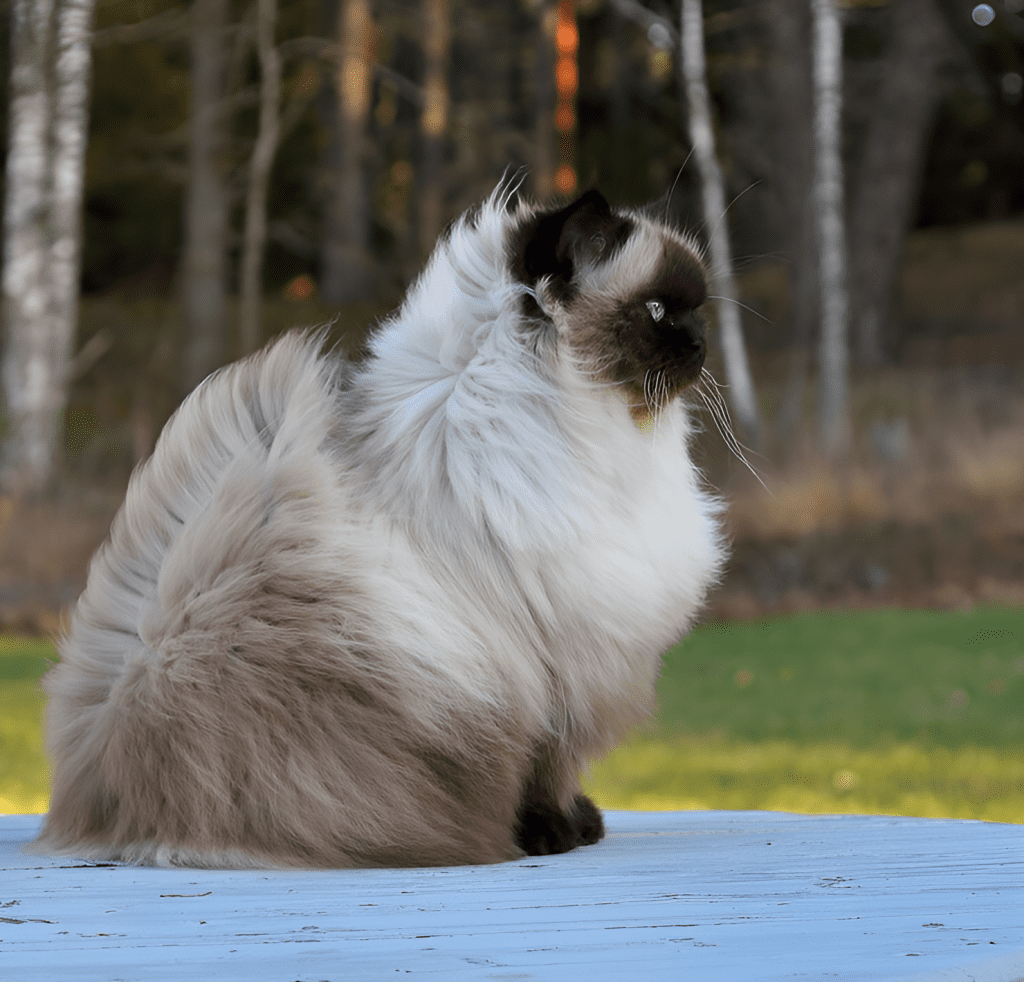
Picture a medium–large cat with a semi-long, silky coat and striking blue eyes—that’s the Himalayan Ragdoll Mix. Most adults weigh around 8–15 pounds, though larger males can exceed this.
Their coat blends Ragdoll softness with Himalayan fluff, appearing in common point colors like seal, blue, chocolate, or lilac, as well as flame/cream, tortie, and lynx patterns, often paired with dramatic facial masks.
Eyes are commonly blue thanks to both parent breeds, though the shade and intensity can vary. Some have a soft doll-face, while others show a flatter Himalayan profile—flatter faces may have more tear staining, while doll-face types usually tear less. Rounded ears, bushy tails, and tufted paws complete the look.
You Might Also Like
Birman Ragdoll Mix Cat Guide 2025 – Personality, Price, Care & Photos
Personality & Temperments
These beautiful hybrids are a gentle blend of calm devotion and quiet curiosity. They often follow their owners from room to room, yet value personal space when things get noisy or busy.
Affectionate but not clingy, they’ll usually lounge nearby rather than on you—though some are true lap lovers, especially in colder months. Often more social than purebred Himalayans, they may be slightly more independent than typical Ragdolls.
Moderate in vocalization, they tend to be tolerant of gentle kids and respectful dogs after slow introductions, and many are food-motivated enough for clicker training. Expect them to park on your keyboard beside you, not on you—until winter rolls in.
Living Needs and Lifestyle Suitability
The Himalayan Ragdoll Mix thrives best as an indoor-only companion, where their long fur and calm, trusting nature are protected from traffic, parasites, and other outdoor risks.
They’re low-energy and highly adaptable, making them well-suited for apartments—if enriched properly. Aim for at least one 5–6-foot perch, puzzle feeders, cozy hideouts, and litter boxes in a 1-per-cat-plus-one ratio. Rotate toys weekly to keep things fresh.
One condo owner in Manila keeps hers happy with a rotating toy bin and a scratcher in each room. This breed fits best in quiet homes with consistent routines, especially where someone is around often. Loud, chaotic environments or long absences can lead to stress or over-grooming. They’re stealth shed-machines, so keep a lint roller by the couch. If your home feels more like a spa than a circus, you’re probably the perfect match.
You Might Also Like
Bengal Ragdoll Mix Cat – Traits, Temperament, Price & Care FAQs
Himalayan Ragdoll Mix Care Tips
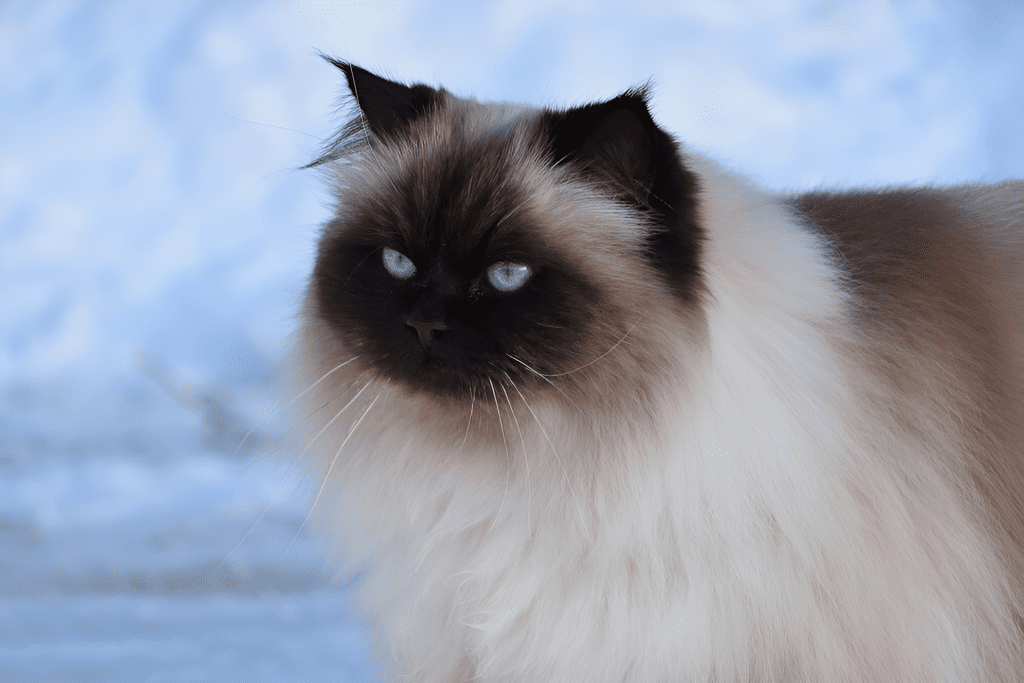
Caring for this mixed breed means meeting their needs in nutrition, grooming, exercise, and overall health. Here’s how to help your cat enjoy a long, healthy, happy life.
Nutrition
Feed a complete, balanced, high-protein diet formulated for cats—wet or a wet/dry mix works well. Grain-free is optional unless your vet recommends it. Wet food boosts hydration; some veterinary dental diets can help teeth, but regular brushing or vet-approved dental treats are more effective.
If coat dullness or dandruff appears, ask your vet about adding omega-3s (EPA/DHA). Other supplements should be vet-guided for specific needs. A slow-feeder bowl can help prevent overeating.
Recommended Post
Hydration Habits
These mixes can be finicky drinkers, so offer multiple water sources—ceramic bowls, pet fountains, and wet food all help. Most cats prefer water stations away from their food. Clean bowls daily, and sanitize fountains 1–2× per week, changing filters as directed. A splash of tuna juice or unsalted bone broth can tempt reluctant sippers.
Grooming
Their long, dense coat needs brushing 3–4× weekly. Sequence: comb the undercoat, then use a slicker for the topcoat, and finish with a cat-safe anti-static spray. Bathe only as needed—seasonally or for heavy shedding, soiling, or oil build-up.
Check eyes and ears weekly; tear stains and wax are common. Trim nails monthly. A stainless “greyhound” comb is your best friend—five minutes nightly beats an hour on Sunday.
Recommended Post
Exercise
While laid-back, they enjoy short bursts of prey-style play. Try wand lures, hallway fetch, or puzzle feeders in 2–3 sessions of 5–10 minutes each.
Health
Watch for PKD, HCM, and dental disease. Ask breeders for PKD DNA-negative proof on Himalayan/Persian lines. Flatter-faced cats may need daily eye wipes and should be monitored for snoring or heat sensitivity.
Schedule yearly wellness exams, baseline lab work in adulthood, and more frequent checks from around age seven or as advised by your vet. Keep vaccinations current, and use parasite prevention even for indoor cats.
Recommended Post
Kitten Stage to Adulthood
Watching a Himalayan Ragdoll mix grow from a wobbly kitten into a graceful adult is a heartwarming journey—one with a few questions along the way. Expect steady growth up to 18–24 months, not just in size (most adults 8–15 lbs, with males on the heavier side) but in confidence, independence, and emotional depth.
Between 6–9 months, they may enter a playful “teen phase” full of energy bursts, curiosity, and the occasional stubborn streak. Patience and consistency here help shape a well-adjusted adult. While early traits emerge in kittenhood, their full personality—whether sweetly clingy or confidently calm—usually settles around the 1-year mark.
Key milestones include litter training (around 2 months), spaying or neutering (around 4–6 months, vet-guided), microchipping at the same time, and considering pet insurance before their first birthday for best coverage. Transition to adult food at 10–12 months. Start grooming routines early—gentle brushing, ear cleaning, and nail trims by 8 weeks—to make them second nature later in life.
You Might Also Like
Adoption, Breeders, and Buying Tips
In 2025, choosing between adopting and buying a Himalayan Ragdoll Mix comes down to your values, budget, and lifestyle. Adoption is rewarding—lower cost, a chance to rescue, and many mixes in shelters, despite the myths. Fees usually range from $75–$200, depending on the group and region.
Buying from a reputable breeder offers known lineage, health screening, and early socialization, though at a higher price—typically $400–$1,500, varying by region, coat quality, and whether it’s a planned cross or accidental litter. Ask for the parents’ TICA/CFA registrations and health clearances.
Avoid breeders with no PKD test on Persian/Himalayan lines, refusal to video-chat or show the cattery, multiple litters always available, no contract or health guarantee, or delivery-only sales. A reputable breeder may even talk you out of a kitten that isn’t the right fit—that’s a green flag.
You Might Also Like
Common Myths and Misunderstandings
Fluffy coats don’t equal Ragdoll—many breeds, including Persians and Himalayans, share that look. Ragdolls also aren’t the only “floppy” cats; Himalayans can be just as relaxed, thanks to personality, not just genetics.
Face shape varies, but flatter faces may bring tear staining or mild airway noise—responsible breeders select for open nostrils and eye health. And no, this mix isn’t hypoallergenic; they shed and produce Fel d 1, so if you’re sensitive, meet them first.
Final Thoughts
The Himalayan Ragdoll Mix is a wonderful choice for those seeking a sociable, affectionate cat with a calm temperament. With its silky coat, gentle nature, and charming personality, this hybrid blends the relaxed demeanor of the Ragdoll with the reserved sweetness of the Himalayan. It thrives in calm homes—apartments can work well with enrichment, while larger spaces are just as suitable if its needs are met.
Before bringing one home, consider your time for grooming, play, and potential health care needs. If you’re ready for the commitment, the Himalayan Ragdoll Mix will reward you with loyalty and love. What’s one trait you’d hope your mix inherits—flop-factor or plush-factor?

Hi, I’m Abir Ahamed—a writer, editor, and proud cat lover with a passion for feline welfare. I use my words to educate, inspire, and advocate for responsible pet care. Based in Bangladesh, I bring a unique perspective to Cats Question, hoping to help cat lovers make informed, compassionate choices.





